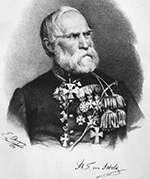-full.webp)
-full-100x.webp)
-frame-100x.webp)
-d1-100x.webp)
About the Artist
Master’s Palette
Reveal the unique color story behind each piece, helping you delve into the artistic essence, and spark boundless inspiration and imagination.
-palette.webp)
Bring the captivating colors to your project. Click to copy!
Artwork Story
Fauna japonica Pl.046 (1833-1850) captures the delicate beauty of Japan’s wildlife with an almost scientific precision, yet it brims with artistic charm. The composition balances intricate details—feathers, fur, or scales rendered with lifelike accuracy—against a backdrop that hints at the creature’s natural habitat without overwhelming it. Siebold’s fascination with Japan’s biodiversity shines through; every stroke feels like a discovery, as if he’s documenting not just an animal but a fleeting moment of wonder. The muted yet vibrant palette suggests both reverence and curiosity, blending European naturalist techniques with a subtle nod to Japanese artistic sensibilities.
What makes this piece stand out is its quiet storytelling. There’s no dramatic pose or exaggerated expression—just an unassuming creature, perhaps overlooked in daily life, given center stage. The work feels like a bridge between cultures, a testament to Siebold’s role as both observer and admirer. It’s easy to imagine him hunched over sketches, determined to preserve the essence of species unfamiliar to Western audiences. The painting doesn’t shout; it whispers, inviting you to lean closer and notice the fine lines, the play of light, the almost tangible texture of its subject.



 (c. 1380-1390)-full.webp)
-full.webp)
-full.webp)
-full.webp)
-full.webp)
-full.webp)